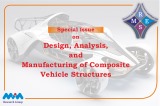Research Article
Performance evaluation of geopolymer concrete using E-waste and M-sand
Pachaivannan Partheeban1, A. R. R. Kalaiyarrasi2, Lakshmi Narayanan. P. B3
1Department of Civil Engineering, Chennai Institute of Technology, Chennai, Tamilnadu, India
2Department of Civil Engineering, St. Peters’ Institute of Higher Education, Chennai, Tamilnadu, India
3Department of Civil Engineering, St. Peters’ College of Engineering and Technology, Chennai, Tamilnadu, India
Keywords
Abstract
Geopolymer Concrete;
E-Waste;
M-Sand;
GGBFS;
Aggregates;
Strength
This study has been conducted to diminish the carbon footprint of concrete and to assess the performance of geopolymer concrete by completely replacing river sand with Manufactured sand (M-Sand) and Electronic Waste (E-waste). Fly ash and Ground Granulated Blast Furnace Slag (GGBFS) are used in various combinations as a cementitious material in geopolymer concrete. The characteristic strength of geopolymer concrete is obtained by completely replacing fine aggregate with E-waste and M-sand with different percentages. An optimum percentage replacement is arrived at by studying the physical, chemical, and mechanical characteristics. The sizes of the E-waste particles used in this research are between 0.3mm and 0.15 mm and it has a deep colour with a specific gravity of 2.68. Maximum compressive strength of 35.8 N/mm2 on 28 days is achieved for the optimal mix proportion of 80% fly ash, 20% GGBFS, 80% M-sand, and 20% E-waste as fine aggregate. Maximum flexural strength obtained is 6.54 N/mm2 for mix proportion 1 and split tensile strength is 4.75 N/mm2 resulted in mix proportion 2. The use of fly ash, E-waste, and M-sand in geopolymer concrete reduce the environmental pollution and depletion of natural river sand. The results of this experimental study very well match with Indian standards of concrete.
© 2021 MIM Research Group. All rights reserved.

